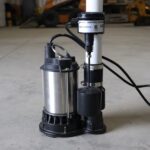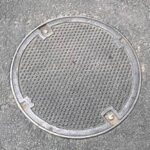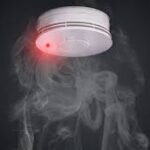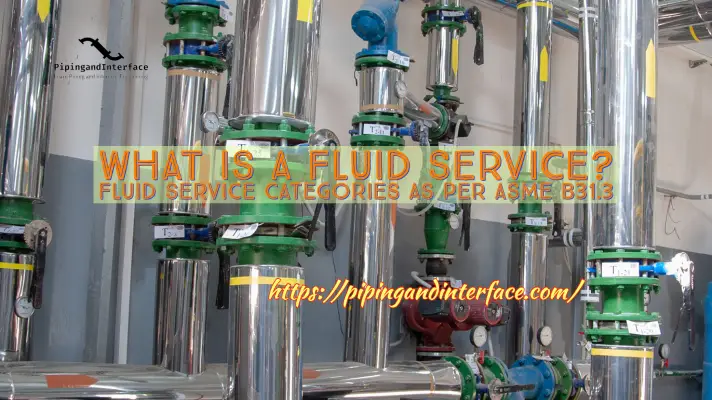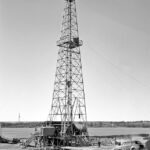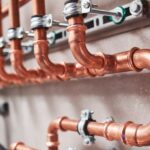A curb stop, also known as a curb valve or curb stop valve, is a type of valve used in water supply systems to control the flow of water to a property or building. It is typically located at or near the property line, where the water main from the municipal water supply system connects to the water service line that leads to a home or business.
The curb stop is usually installed in a small underground pit or box just below ground level, near the curb or sidewalk. It provides a way for the property owner or utility personnel to shut off the water supply to the property in case of emergencies, repairs, or when the property is vacant for an extended period. Curb stops are often operated using a special key or wrench, and turning the valve clockwise shuts off the water while turning it counterclockwise opens it to allow water flow.
Curb stops play a crucial role in water distribution systems by allowing for the isolation of individual properties or sections of a water main without disrupting service to the entire area. They are an important component of water infrastructure and are typically maintained and operated by the local water utility or municipality.
Importance of Curb Stop
Curb stops are vital components of water infrastructure that provide control, flexibility, and efficiency in managing water distribution systems. They serve a range of practical purposes that contribute to water conservation, property maintenance, public safety, and the overall functioning of water supply networks.
Curb valves play a crucial role in water supply systems and are important for several reasons:
Emergency Shut-Off:
Curb stops allow for the rapid shut-off of water to a property in case of emergencies, such as a water main break, plumbing leak, or other water-related issues. This helps prevent water damage to the property and can be essential for public safety.
Maintenance and Repairs:
Curb stops enable maintenance and repairs to the water service line or plumbing within a property without affecting water service to neighboring properties. This is essential for minimizing disruptions and ensuring that repairs can be carried out efficiently.
Property Turnover:
Curb stops are used when properties change ownership or tenants move in and out. They allow for the secure and controlled activation or deactivation of water service to a specific property, ensuring that water is only provided to authorized users.
Water Conservation:
Curb stops can be used to temporarily shut off water to properties that are vacant or undergoing renovations. This helps conserve water and prevents wastage when the property is not in use.
Water Quality:
In the event of a water quality issue, such as contamination or the need to flush the water distribution system, curb stops can be used to isolate specific properties or sections of the water main to address the problem without affecting other areas.
Public Utility Control:
Curb stops are typically owned and operated by the local water utility or municipality. They provide the utility with control over the water supply to individual properties, ensuring that water usage is monitored, billed, and managed efficiently.
Compliance and Safety:
Curb stops are essential for compliance with building codes and regulations, as they provide a means to shut off water during inspections, maintenance, or other compliance-related activities. They also enhance safety by allowing for quick access to shut off water in emergencies.
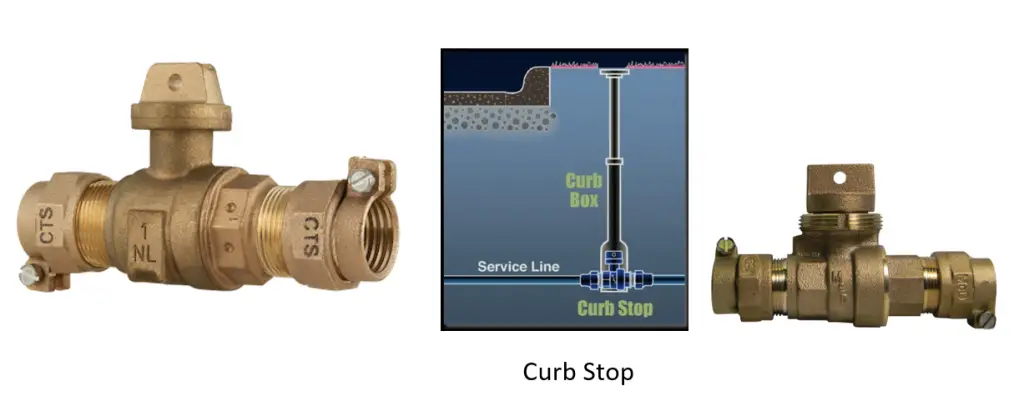
Types of Curb Stop Valves
There are broadly two types of curb stop valves; Standard curb stop and corporation curb stop.
The standard curb stop is installed at the home or property whereas the corporation curb stop valve is located at the main supply line.
Additionally, depending on the type of valve used, purpose, and application there are various types of curb stops.
Gate Valve Curb Stop:
This is one of the most common types of curb stops. It consists of a valve with a gate or wedge-shaped disc that can be raised or lowered to control the flow of water. Gate valve curb stops are known for their durability and ability to provide a tight seal when closed.
Ball Valve Curb Stop:
The ball valve curb stops using a spherical ball with a hole through the center to control water flow. They are often preferred for their ease of operation and reliability in freezing conditions.
Compression Curb Stop:
Compression curb stops use a compression mechanism to control water flow. They are typically easier to install and maintain than other types of curb stops. They are often used in regions with milder climates.
Tapping Curb Stop:
Tapping curb stops have a connection point that allows for tapping into the water main for new service lines or repairs. They are often used during the installation or expansion of water supply systems.
Angle Curb Stop:
Angle curb stops are designed with an angled body, making them suitable for installations where space is limited or where the water service line enters the building at an angle.
Meter Curb Stop:
Meter curb stops are equipped with a connection point for water meters. They are commonly used to control the flow of water to individual properties while also providing a location for metering water usage.
Remote Operated Curb Stop:
Some modern curb stops can be remotely operated using technology such as wireless communication systems. This allows for more convenient and efficient control and monitoring of water flow.
Frost-Free Curb Stop:
Frost-free curb stops are designed to prevent freezing in cold climates. They are often installed deeper underground and incorporate insulation to protect against freezing temperatures.
Hydrant-Style Curb Stop:
Hydrant-style curb stops resemble fire hydrants and are equipped with a handle that can be operated using a wrench or key. They are commonly used for controlling water supply to fire hydrants.
Working of Curb Stop
A curb stop is a valve that regulates water flow to a property and functions like an on/off switch. It operates with a specialized key or wrench, which, when turned counterclockwise, opens the valve, allowing water to flow from the municipal supply into the property’s service line. Conversely, turning it clockwise closes the valve, cutting off the water supply to the property. Curb stops are vital for quick water shutoffs during repairs, emergencies, or maintenance. They provide efficient control over water distribution to individual properties, ensuring safe and reliable access to water resources while minimizing disruptions when needed.
Location of Curb Stops
Even though the location of a curb stop can vary depending on water utility standards and guidelines, they are typically located at or near the property line, where the water service line from a municipal water main connects to an individual property. Here’s more detail on their specific location:
Near the Curb or Sidewalk:
Curb stop valves are often situated close to the curb or sidewalk, which is why they are referred to as “curb” stops. They are usually installed in a small underground pit or box just below ground level.
Property Line:
The exact location of a curb stop valve can vary, but it is generally positioned at or very near the property line, which is the boundary between the municipal right-of-way (e.g., the street) and private property. This placement allows the valve to serve as a demarcation point between the public water supply system and the water distribution system within the property.
Access Point:
A curb stop valve is accessed through a cover or cap on top of the underground pit or box. This cover provides access to the valve for authorized personnel, such as utility workers, plumbers, or property owners, using a curb stop wrench or key to operate the valve.
Uniform Depth:
Curb stop valves are typically installed at a uniform depth below ground level, which can vary but is often between 2 and 4 feet deep, depending on local regulations and climate conditions. This depth helps protect the valve from freezing temperatures and physical damage.
What is a Curb Stop Box?
A curb stop box, also known as a curb box or curb key box, is a protective enclosure or housing that covers and provides access to a curb stop valve. It is typically installed at or near the property line, close to the curb or sidewalk. The main purpose of a curb stop box is to:
Protect the Curb Stop Valve:
The curb stop valve is an important component in a water distribution system, and it controls the flow of water from the municipal water main to an individual property. The curb stop box serves as a protective barrier, keeping the valve and associated components safe from dirt, debris, physical damage, and weather conditions.
Provide Access:
Curb stop boxes have a removable or hinged cover that allows access to the curb stop valve. Utility workers, property owners, or authorized personnel can use a key or wrench to open the box and operate the valve when necessary. This ease of access is crucial for shutting off water during emergencies, conducting maintenance, making repairs, or turning water service on or off for a property.
Locate the Valve:
Curb stop boxes also serve as markers or indicators of the curb stop valve’s location. This makes it easier for utility workers and others to quickly locate the valve, especially when they need to take action during water-related incidents or inspections.
Curb stop boxes come in various designs and materials, including metal, plastic, or concrete, and they are typically installed at a consistent depth below ground level. Proper installation and maintenance of curb stop boxes are essential for the efficient and reliable operation of water distribution systems, as they ensure the curb stop valve remains accessible and protected.
Difference Between Curb Stop Valve and Meter Valve
Both Curb Stop Valve and Meter Valve are essential components in water distribution systems, serving distinct purposes while sharing some similarities. While the curb stop valve regulates water flow to individual properties and is used for shutoffs, the meter valve is linked to water meters, focusing on measuring and monitoring water usage for billing purposes. Here are the key differences between them:
Function and Purpose:
- Curb Stop Valve: This valve controls the flow of water from the municipal water main to an individual property. It is primarily used to shut off water supply during emergencies, maintenance, or repairs. It does not measure water usage.
- Meter Valve: A meter valve, on the other hand, is specifically associated with water meters. It allows the water utility to measure and record the amount of water consumed by a property. While it can control water flow, its primary function is to facilitate billing based on water usage.
Location:
- Curb Stop Valve: It is typically located underground, near the property line, in a pit or box close to the curb or sidewalk.
- Meter Valve: Meter valves are often found indoors, usually near the water meter itself, which can be in a basement, utility room, or even outside the property.
Operation:
- Curb Stop Valve: It is operated with a key or wrench, manually turning the valve to open or close the water supply.
- Meter Valve: While it can be manually operated, meter valves are sometimes equipped with additional features for remote or automated reading and control.
Usage Control:
- Curb Stop Valve: Primarily used by property owners and utility personnel for property-specific water control.
- Meter Valve: Managed and accessed by the water utility for the purpose of accurate metering and billing.
What is a Curb Stop Wrench?
A curb stop wrench, also known as a curb key or curb stop key, is a specialized tool used to operate curb stop valves. These valves are typically located in underground pits or boxes near the curb or sidewalk, where the water service line from a municipal water main connects to a property. Curb stop wrenches are designed to provide access to and control over these valves, allowing individuals such as utility workers, plumbers, or property owners to open or close them as needed.
Differences between a Curb Stop and a Main Stop
A curb stop and a main stop are both components used to control water flow in a distribution system, but they serve different purposes. A curb stop or curb valve is located near a property’s boundary at the curb or sidewalk and is used to control the water supply from the municipal main to an individual property. It enables property-specific water shutoff for maintenance, repairs, or emergencies. On the other hand, a main stop or main valve is positioned within the municipal water main itself and controls water flow to a larger area or neighborhood section. It is used by water utility personnel to manage water distribution at a broader level, affecting multiple properties or even an entire district. In essence, curb stops are property-specific, while main stops control water supply to larger areas within the distribution system.
FAQ-Frequently Asked Questions
What is a curb stop?
A curb stop is a valve used in water supply systems to control the flow of water from the municipal water main to an individual property or building. It is typically located near the curb or sidewalk at the property line. It is also known as a curb valve or curb stop valve.
Why are curb stops important?
Curb stops are crucial because they allow for the quick and controlled shutoff of water to property during emergencies, maintenance, repairs, or when properties are vacant. They help prevent water damage, ensure safety, and enable efficient water management.
How do I operate a curb stop?
To operate a curb stop, you’ll need a specialized key or wrench. Turning the key counterclockwise (left) will open the valve, allowing water to flow, while turning it clockwise (right) will close the valve, cutting off the water supply.
Where is the curb stop located on my property?
Curb stops are typically located near the curb or sidewalk, at or near the property line. Look for a small underground pit or box with a cover that provides access to the valve.
Who is responsible for maintaining the curb stop?
In most cases, the local water utility or municipality is responsible for maintaining and servicing curb stops, including repairs and replacements. Property owners are typically responsible for ensuring access to the curb stop and keeping it clear of obstructions.
Can curb stops freeze in cold weather?
Yes, curb stops can freeze in cold climates. In such areas, they are often installed at a sufficient depth below ground level to protect them from freezing temperatures.”
Can curb stops be remotely operated?
Some modern curb stops are equipped with technology that allows for remote operation and monitoring, enhancing control and efficiency in water distribution management.
Are there different types of curb stops?
Yes, there are various types of curb stops, including gate valve curb stops, ball valve curb stops, compression curb stops, and more. The choice of type depends on local preferences and system requirements.
Do I need to know the location of my curb stop?
Yes, it’s important for property owners to be aware of the curb stop’s location. Knowing this allows for quick action in emergencies and makes it easier to coordinate maintenance or repairs with the water utility.
Is it possible to install a curb stop if one is not present on my property?
Installation or replacement of curb stops should be carried out by the water utility or a licensed plumber. Property owners should contact their local utility for guidance and assistance in such cases.

